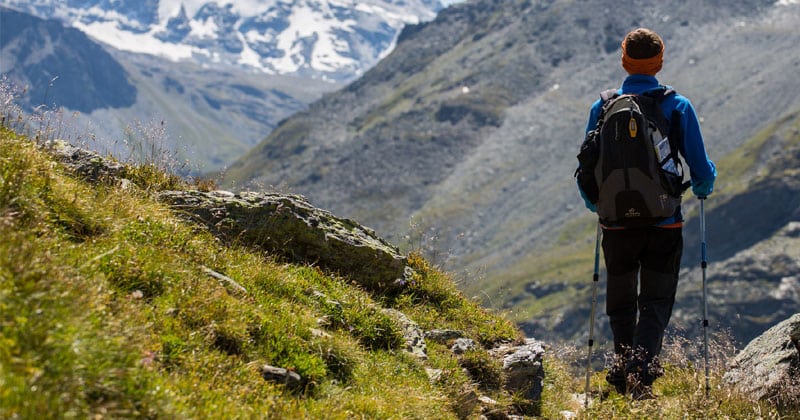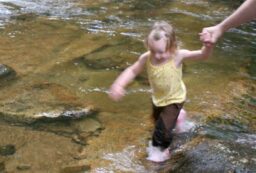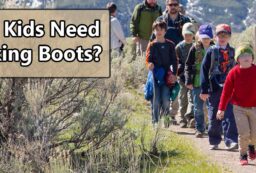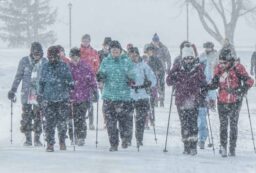Not every hike is the same, nor is every hiker the same. So, any two packing lists for hiking you see could be completely different.
However, there are some things which you should always bring with you hiking – regardless of your experience, hike length, or hike location.
Why are these items on the packing list?
Because you never know what could go wrong while hiking. Here are just some stories that I pulled from the recent news:
- A mother and daughter had to be rescued after getting lost during what was supposed to be a “short hike” and ended up walking in circles for hours (source)
- A 12-year old boy died from exposure to excessive heat during a hike in near Phoenix. (source)
- A teenager who got separated from his hiking group ended up spending three nights in the woods until he was rescued. (source)
Note that not all hiking horror stories are from unexperienced hikers. Even experienced hikers can succumb to injury, get lost, or have confrontations with wild animals.
While it is really unlikely that anything bad will happen while hiking, you still need to be prepared for anything!
This packing list consists of the absolutely necessary things to bring hiking so you can survive regardless of what happens.
1. Water
You’ve got to stay hydrated! On a short hike, a liter or two should be enough. Not sure? Find out how to calculate how much water to bring hiking.
2. Way of Purifying Water
If you get lost, you’ll need more water than you anticipated. Never drink water because the only thing that’s going to make being lost in the woods worse is having diarrhea while being lost in the woods. I bring my Sawyer Mini water filter with me backpacking because it can screw onto a water bottle and is super lightweight.
3. Whistle
You blow this in case you get lost. A lot of hiking backpacks now have whistles built into the straps.
4. Weather Protection
Depending on where you hike, this could mean:
- Rain jacket/poncho: Weather can change really quickly. Even if the forecast says it is going to be sunny, still bring a rain jacket. Otherwise, you could end up wet and hypothermic.
- Sun screen and UV-protection lip balm (seriously, it sucks when your lips get burnt!)
- A hat with a brim: Keeps your eyes safe from sun and rain. Nothing like squinting through the elements!
- Layers of clothes: Layers mean you can adjust body temperature easily!
5. Appropriate Footwear
What constitutes as “appropriate” footwear varies depending on where you are going.
For example, I almost always go hiking in forest mountains where my high-topped boots are good for the uneven terrain and give some protection against venomous snake bites.
But those same boots were terrible when I went hiking in the jungles of Peru. I should have worn Wellingtons – especially since we had to cross a river 14 times. I got sick of taking my boots off each time and just walked through the water. My feet were prunes by the time I got back. The Wellies would have been better protection against the zillions of venomous snakes there as well as the biting ants.
6. Headlamp
That same jungle hike ended up taking 7 more hours than we anticipated. I’m glad I had my headlamp so we could walk the last part of the trail out. Here are tips on how to choose a good headlamp.
7. Knife
A knife is your ultimate survival tool. You’ll need it for things like:
- Making a featherstick so you can make a fire in wet conditions
- Cutting bandages
- Digging a cat hole for when you go to the bathroom (or, better yet, use the knife to whittle a digging stick so you don’t have to immediately resharpen your knife!)
- Peeling off strips of birch bark to eat (because you’re such a badass survivalist that you know it’s edible…)
- Cutting your arm off in case you get stuck under a fallen rock (okay, don’t really recommend this, but you might get a movie deal like Aron Ralston afterwards 😉 )
8. Food
You’ll use up a lot of calories on a hike. And, once blood sugar crashes, you’ll get cranky. So, do everyone a favor and bring some snacks along.
9. Map and Compass or GPS
I personally don’t trust technology. (What if the battery dies? What if it falls and breaks?) So, I stick with a map and a compass when hiking. There are plenty of hikers who use just GPS systems though – and they are certainly better if you are completely friggin’ lost and can’t find yourself on the map.
If you can afford it, you might consider an advanced outdoor location device, such as the SPOT finder system.
10. Firestarter
You need this in case you get lost or miscalculated hiking time have to spend an unplanned night outdoors. The fire will keep you from freezing to death, allow you to cook food that you forage (which will probably be grubs unless you are a badass survivalist and know how to catch/skin game in the woods), and can serve as a signaling device too.
11. Mini First Aid Kit
You don’t need to bring a lot – just the necessities to keep you alive in case of injury. My dad brings just medical tape on his long hikes. It can be used for covering wounds, securing a splint, or wrapping a sprained ankle. My outdoor first aid kit checklist has a few more items. 🙂
Don’t forget about personal medications like an inhaler or Epi Pen!
12. Day Pack
You’ll need a way to carry all of this gear. You don’t need a fancy day pack for hiking, but some comfortable straps, side pockets, and a hip straps can go a long way towards making the hike better.
Other Hiking Gear You Might Want to Bring
These aren’t necessary, but they can certainly make the hike much more enjoyable and safer!
- Hiking poles (read the pros and cons of hiking poles here)
- Toilet paper
- “Hygiene” shovel
- Bug spray
- Spare socks
- Binoculars
- Bag for trash (If you carry it in, you gotta carry it out!)
- Field guide/route guidebook
- Book to read at your destination
- Notebook and pen
- Extra food
- Backpacking stove
- Utensils for eating the food
- Wet wipes (pack them out – do not bury!)
- Quick-dry towel
- Emergency blanket
Anything that you’d add to the list? I’d love to hear from you in the comments below!
Image credit: “Hiking” https://www.flickr.com/photos/franckmichel/14942703299/, (CC BY 2.0) by Franck_Michel













2 Comments
Matthew
July 30, 2020 at 6:58 pmPlease don’t recommend that people bring wet wipes. They are very bad for the environment and some people discard them irresponsibly.
Diane
August 4, 2020 at 12:20 pmFair point -I added a blurb next to that item reminding people to pack them out since they can’t be buried like toilet paper can (in some situations). But the baby wipe issue isn’t as clear-cut as what you are implying: One wet wipe can clean up what would require a LOT of toilet paper, especially for us females who have to worry about cleaning menstrual cups or period blood (something you probably didn’t think about as a man!!!). Anyway, it’s one of those items you *might* want to bring, not a must-have.